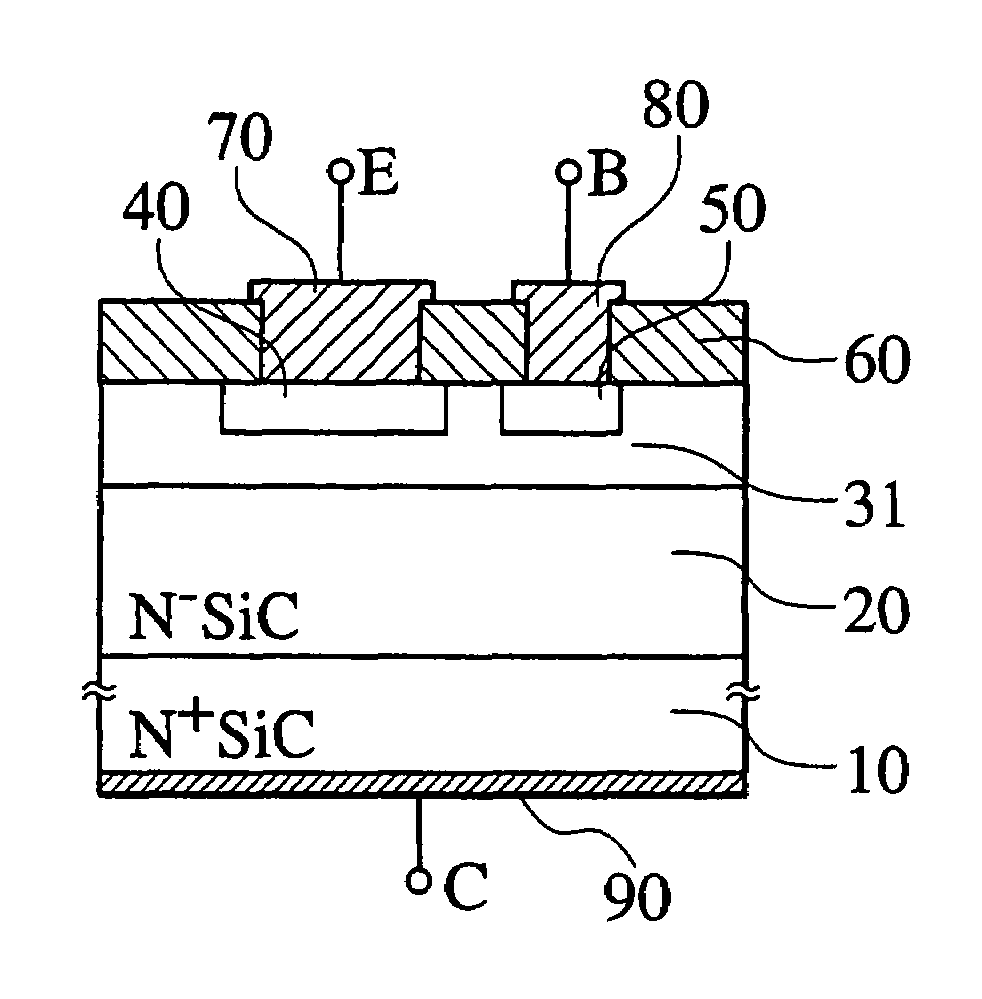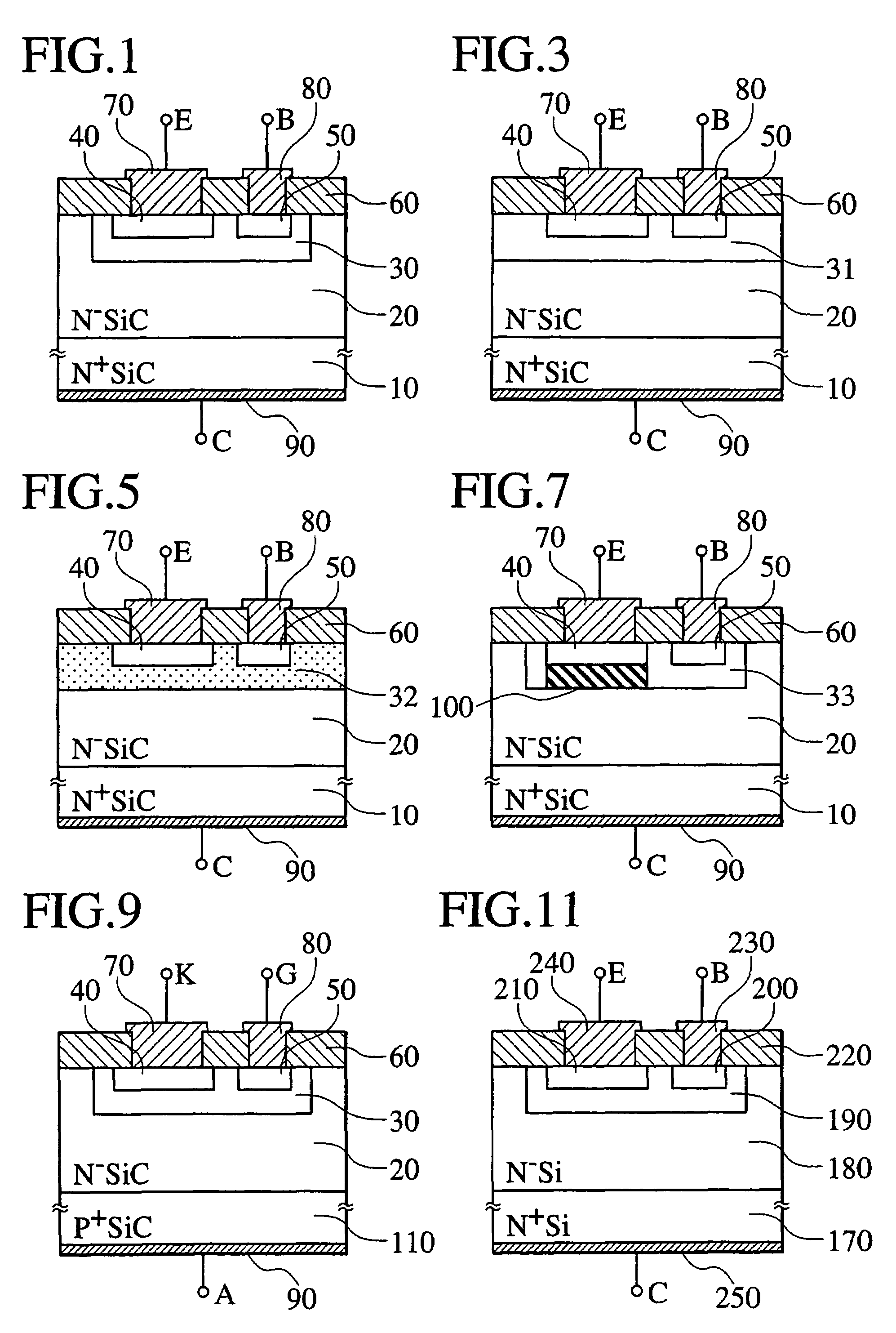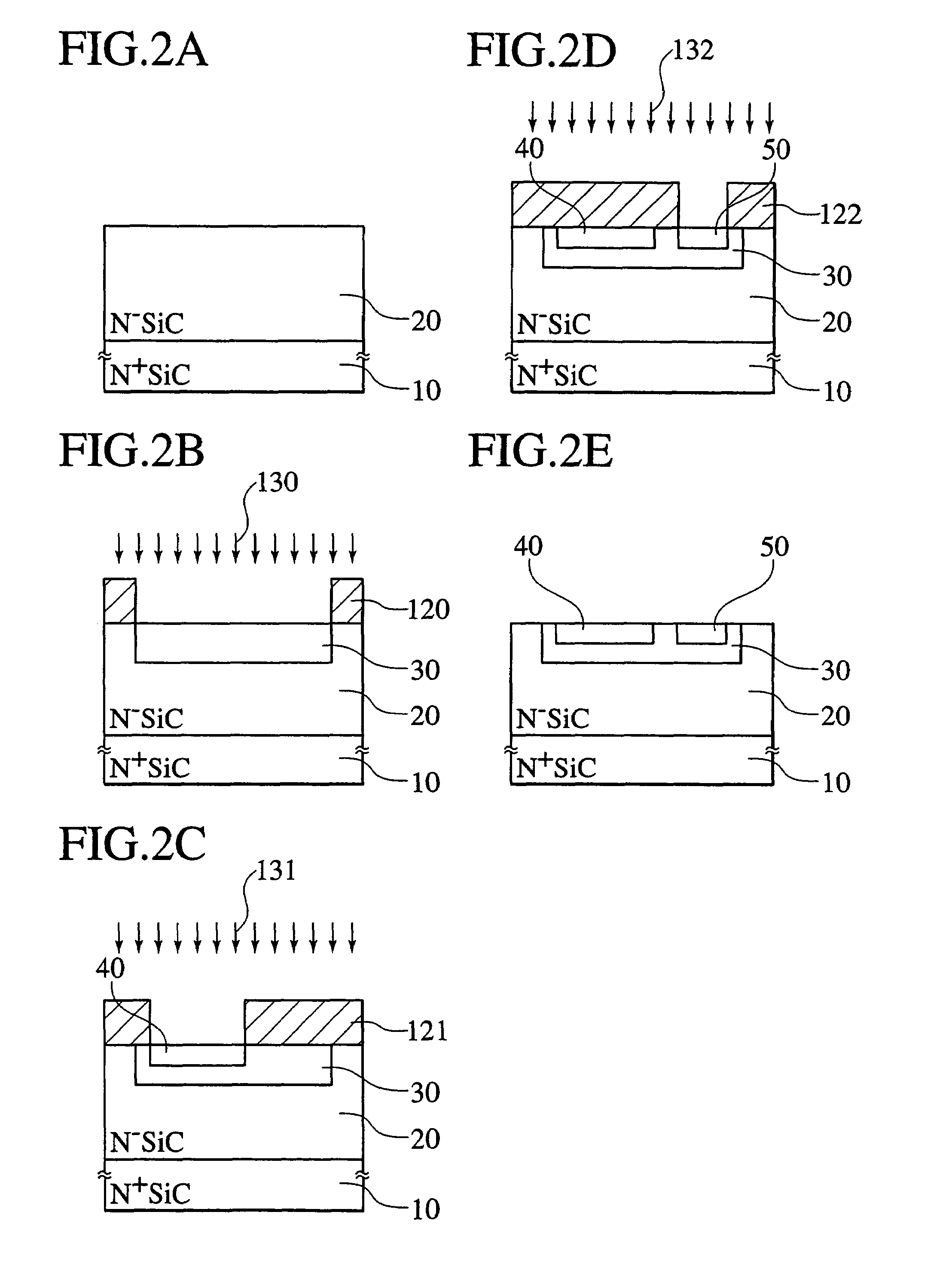Semiconductor device and manufacturing method thereof
a technology of semiconductor devices and manufacturing methods, applied in the direction of semiconductor devices, basic electric elements, electrical appliances, etc., can solve the problems of reducing reducing affecting the operation of the device, so as to reduce the current gain hfe, reduce the efficiency of emitter injection, and the effect of high withstanding voltag
- Summary
- Abstract
- Description
- Claims
- Application Information
AI Technical Summary
Benefits of technology
Problems solved by technology
Method used
Image
Examples
embodiment 1
[0035]FIG. 1 is a cross sectional view showing the structure of an embodiment 1 of the semiconductor device in accordance with the invention.
[0036]The present embodiment 1 is applicable to a high voltage SiC semiconductor bipolar transistor in which a p-type base region is formed with boron as a dopant
[0037]The high voltage SiC semiconductor device comprises an n−-type epitaxial layer 20 formed on an n+-type SiC substrate 10 in order to provide a collector region therein and a p-type base region 30 formed within a preselected surface area of the n−-type epitaxial layer 20.
[0038]The p-type base region 30 is doped with boron, which serves to generate a deep impurity level in the silicon carbide semiconductor, and has the free carrier density which is smaller than the space charge density of the depletion layer formed in the p-type base region 30 by about two orders of magnitude. In accordance with O. Takemura, T. Kimoto, H. Matsunami, T. Nakata, M. Watanabe and M. Inoue, Materials Sci...
embodiment 2
[0092]FIG. 3 is a cross sectional view showing the structure of an embodiment 2 of the semiconductor device in accordance with the invention.
[0093]The present embodiment 2 is applicable to a high voltage SiC semiconductor bipolar transistor in which a p-type base region is formed with boron as a dopant.
[0094]The high voltage SiC semiconductor device comprises an n−-type epitaxial layer 20 formed on an n+-type SiC substrate 10 in order to provide a collector region therein, and an epitaxial layer which is formed on the n−-type epitaxial layer 20 in order to provide a p-type base region 31.
[0095]The high voltage SiC semiconductor device further comprises an n+-type emitter region 40 and a p+-type base contact region 50 in the predetermined areas of the surface layer of the p-type base region 31. The n+-type emitter region 40 is connected to an emitter electrode 70. Also, the p+-type base contact region 50 is connected to a base electrode 80 while a collector electrode 90 is formed on ...
embodiment 3
[0108]FIG. 5 is a cross sectional view showing the structure of an embodiment 3 of the silicon carbide semiconductor device in accordance with the invention.
[0109]The present embodiment 3 is applicable to an SiC high voltage bipolar transistor in which a p-type base region is formed with boron and aluminum as dopants.
[0110]The SiC high voltage bipolar transistor comprises an n−-type epitaxial layer 20 formed on an n+-type SiC substrate 10 in order to provide a collector region therein, and an epitaxial layer which is formed on the n−-type epitaxial layer 20 in order to provide a p-type base region 32.
[0111]This p-type base region 32 is formed by epitaxial growth with an impurity (boron in this case) which serves to generate a deep impurity level to form the epitaxial layer to be a p-type region, followed by ion-implantation with an impurity (aluminum in this case) which serves to generate a shallow impurity level into the entirety of the p-type region.
[0112]The high voltage SiC semi...
PUM
 Login to View More
Login to View More Abstract
Description
Claims
Application Information
 Login to View More
Login to View More - R&D
- Intellectual Property
- Life Sciences
- Materials
- Tech Scout
- Unparalleled Data Quality
- Higher Quality Content
- 60% Fewer Hallucinations
Browse by: Latest US Patents, China's latest patents, Technical Efficacy Thesaurus, Application Domain, Technology Topic, Popular Technical Reports.
© 2025 PatSnap. All rights reserved.Legal|Privacy policy|Modern Slavery Act Transparency Statement|Sitemap|About US| Contact US: help@patsnap.com



